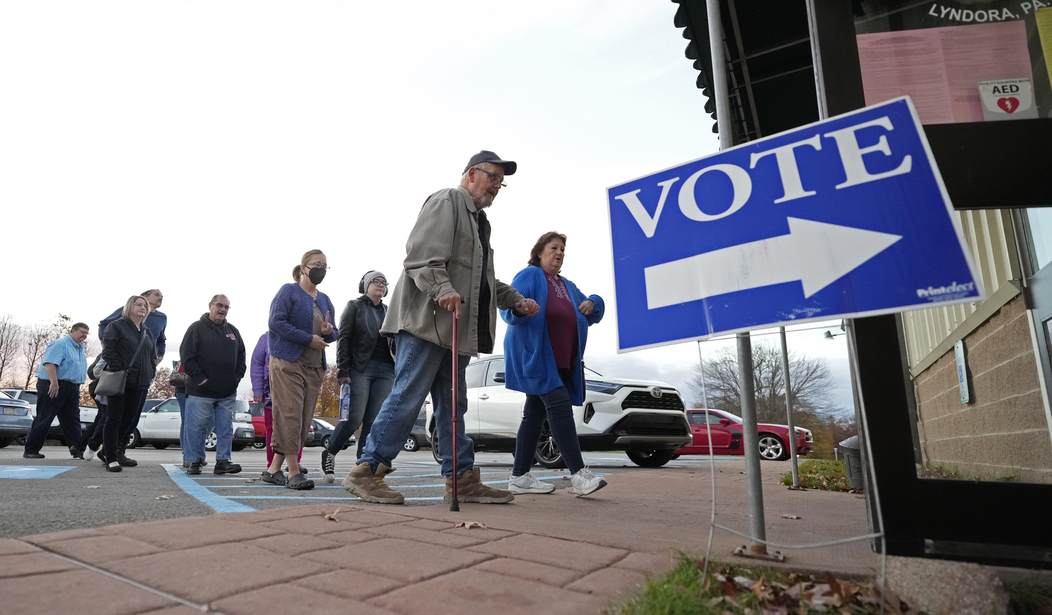In 2016, the polls all showed that Hillary Clinton's election was inevitable. I spent the entirety of the campaign dreading the outcome, which was largely seen as a foregone conclusion. And then Trump won. In 2020, convinced the polls were wrong, I spent the entirety of the campaign expecting Trump to win. And frankly, for most of election night, it looked like he was going to. This year has been so incredibly off-script that pollsters, experts, and pundits all say the election could go either way.
In a lot of ways, that has made this the most exhausting election I can remember.
Just look at the differences in the polls this year compared to 2020 and 2016:
It's Election Day! Here’s how the 2024 presidential race compares to the 2020 and 2016 elections based on the final RCP poll averages. pic.twitter.com/OXSc1eZ37g
— Matt Margolis (@mattmargolis) November 5, 2024
Yeah, the polls show a close race. Of course, the big question is whether the polls are right or wrong, and if they're wrong, are they too biased against Trump or for Trump? No one can say for sure. Hopefully, we'll find out in a few hours.
Just last week, polling and data guru Nate Silver blasted pollsters for putting their fingers on the scale to show a statistically tied race.
“I kind of trust pollsters less,” Silver said on his podcast. “They all, every time a pollster [says] ‘Oh, every state is just plus-one, every single state’s a tie,’ No! You’re f***king herding! You’re cheating! You’re cheating!”
And now, of course, that's exactly what Silver's model says. "At exactly midnight on Tuesday, I pressed the 'go' button for the final time on our election model this year," he wrote. "I knew it was going to be close. I felt like I was spinning a roulette wheel. (Appropriate, I guess, in a year when I published a book about gambling.) We’d decided ahead of time to run 80,000 simulations instead of our usual 40K."
Related: If This Is True, Trump Will Win and We’ll Know Relatively Early
"And after 80,000 simulations, Kamala Harris won the Electoral College in … 40,012 of them, or 50.015 percent," he said. "The remaining 39,988 were split between Trump (39,718) and no majority — a 269-269 tie — which practically speaking would probably be resolved for Trump in the U.S. House."
Silver, reflecting on his experience forecasting elections, describes 2024 as unprecedented.
Ain't that the truth?
In past cycles, his models often leaned clearly toward one party; for instance, Democrats were solid Electoral College favorites in 2008, 2012, and 2020, and even Hillary Clinton held a slight edge in 2016. For midterms, Silver notes distinct patterns: Democrats were expected to retain the Senate but lose the House in 2010, while 2014 was a straightforward Republican hold. Similarly, 2018 saw Democrats favored in the House but weak in the Senate, and in 2022, the Senate was close, but the House favored Republicans.
This year, however, the model initially pegged Joe Biden as an underdog. Although Democrats rallied to replace him, this hasn’t provided any certainty. "Democrats were trying to convince themselves the race was a toss-up when it wasn’t," Silver said. "But Democrats did the smart thing and shoved Biden aside. And now they’re rewarded by being able to determine the future of the country by means of … a coin flip?"
Of course, the results could surprise us, and once again, the legitimacy of the polling industry will be called into question.










